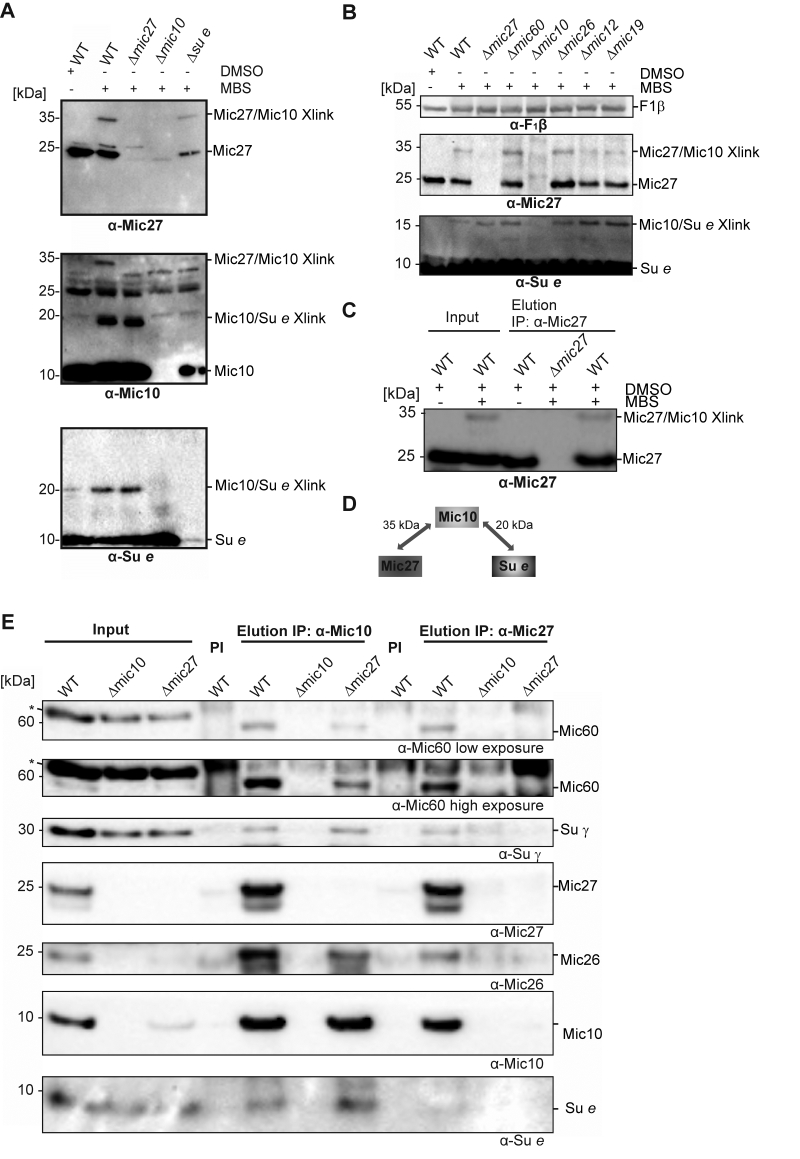Back to article: Cristae architecture is determined by an interplay of the MICOS complex and the F1FO ATP synthase via Mic27 and Mic10
FIGURE 5: Mic10 is physically linked to the F1FO-ATP synthase. (A) Isolated wildtype- (WT), Δmic27-, Δmic10– and Δsu e-mitochondria were treated with the chemical crosslinker MBS (m-maleimidobenzoyl-N-hydroxysuccinimideester). Wild type mitochondria treated with DMSO served as a negative control. Crosslinked proteins were analyzed by SDS-PAGE and Western blotting. A crosslink of Mic27 and Mic10 (Mic27/Mic10) was identified at 35 kDa and a crosslink of Mic10 and Su e (Mic10/Su e) at 20 kDa. (B) Chemical crosslinking was performed with isolated mitochondria of indicated yeast strains: wild type (WT), Δmic27, Δmic60, Δmic10, Δmic26, Δmic12 and Δmic19. (C) Immunoprecipitation of Mic27-Mic10 crosslink. Isolated wild type- (WT) or Δmic27-mitochondria were treated or not with the crosslinker MBS, solubilized with digitonin (4g/g) and co-immunoprecipitation using a purified anti-Mic27 (right part) antibody was performed. As negative controls, mitochondria not treated with MBS and the corresponding deletion strain were used. The asterisk (*) indicates a nonspecific band of the anti-Mic60 antibody. (D) Schematic representation of the described chemical crosslinks of Mic10 with Mic27 and Su e. (E) Isolated wild type- (WT), Δmic10– and Δmic27-mitochondria were solubilized with digitonin (4g/g) and co-immunoprecipitation using a purified anti-Mic10 (middle part) or anti-Mic27 (right part) antibody was performed. As negative controls, mitochondria treated with the corresponding pre-immune serum (PI) and the corresponding deletion strains were used. The asterisk (*) indicates a nonspecific band of the anti-Mic60 antibody.

